Expedition Team Directory
Browse our directory of expedition team members who will join us on upcoming expeditions.
- Expedition Leader
- Naturalist
- National Geographic Photography Expert
Our Team
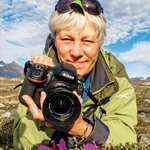
Sisse Brimberg
Born in Denmark, award-winning photographer Sisse Brimberg has produced and photographed more than 30 stories for National Geographic magazine over the past 40 years, covering a wide range of subjects--from the Hanseatic League and the Vikings to the global flower trade and the prehistoric cave art of southwestern France. As contributing photographer for National Geographic Traveler , she shot various city stories in Amsterdam, Paris, Copenhagen, Casablanca, Oaxaca, Saint Petersburg, and beyond. Having photographed in more than 70 countries across the globe -- from Cape Verde to the Azores, and Antarctica to the Arctic -- she enjoys sharing her love of photography with travelers. Brimberg has earned first prize honors from the prestigious Pictures of the Year International (POY), and her images have been exhibited around the world in Germany, Greece, Brazil, Mexico, New York City (International Center for Photography), and Washington, D.C. (The Newseum).
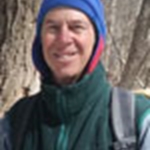
Daniel Baldwin
An educator at heart, Dan finds great joy in helping others explore and connect with the world around them. He has taught marine sciences in the Florida Keys and on Catalina Island, science and math in international schools in Mexico, Costa Rica, and the South Pacific, and swimming and water safety in Alaska. Dan grew up in Pennsylvania and attended Penn State where he earned a degree in science education. He has always sought out fulfilling work, in beautiful locations, surrounded by wonderful people. Connection with the environment has been a constant theme in his work and travels. At present, Dan has returned to his roots in Central Pennsylvania where he and his wife have settled and spend their time in the great outdoors. While on board with Lindblad-National Geographic he can be found engaging folks in the natural world; and is always on the lookout to provide enlightenment for naysayers of the green flash.
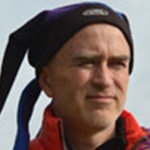
Timothy Martin
Tim Martin has been teaching Geology, Astronomy, Art and Earth Science for over 20 years. Although he grew up in several locations around the United States, he always felt most at home in the natural world. His persistent curiosity led to his undergraduate study of the natural sciences and art, and his love of teaching led to graduate work in Geoscience Education. Beyond classroom study, he has worked with an international Climate and Geologic research expedition in Siberia, he and colleagues flew an experiment on NASA’s zero-gravity research plane, studied volcanoes in Hawaii, and in 2016 Tim was selected as a National Geographic and Lindblad Expeditions Grosvenor Teacher fellow. Tim has taught Art in addition to the science classes. Helping students explore their creative side through photography along with learning the technical aspects of working with and firing clay has been a wonderful extension to his scientific and aesthetic pursuits. In his free time, Tim is an active artist, and he enjoys all sorts of outdoor activities with his family. Frequently on weekends you may find him “up close and personal” with Earth Science while hiking and rock climbing.
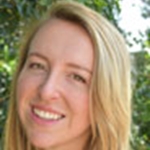
Cammy Lachesnez-Heude
Cammy was born in Martinique but didn’t quite stick around long enough to learn French, but she’s working on it! Her family relocated to the Sunshine State of Florida where the Gulf of Mexico was a five-minute bike ride away (not including the very necessary ice cream stop along the way). The majority of her childhood was spent eating oranges while perched in the trees of her backyard or cutting her feet up while calf deep in mangrove estuary muck. While she loved the weird and wacky creatures of Florida, California was calling. Off to University of California, Santa Cruz she went to become a banana slug under the redwoods while majoring in Environmental Studies and Politics. Environmental Law seemed the next logical step but a bison ranch, Australian cruise ship, and currently Lindblad all seemed like reasonable speed bumps along the way. Cammy’s dream creature to see in their natural habitat is a Narwhal, so if you have seen one, tell her all about it! You can find her behind her desk, partaking in a polar plunge, hiking ridges, or madly searching for creatures from the bridge.
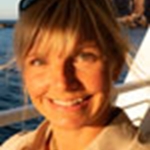
Christine West
Christine is an Explorer's Club Fellow, Polar Expedition Diver, Expedition Leader and conservation photographer and videographer. She has worked as a professional diver around the world for over 18 years dedicated to ocean education, exploration and safety. Christine proudly became a USCG certified 100-ton Captain in 2017. She now spends over six months per year in the field documenting and sharing stories about places that are rarely seen and yet are rapidly changing due to the warming of the Earth such as the High Canadian Arctic and Antarctica. Christine uses a variety of tools such as underwater cameras, drones and ROVs to create imagery that serve as voices for ecosystems that need immediate protection. It is important to her to not only document species presence and abundance, but to share their stories and behaviors in a memorable way that drives wider audiences, including inland communities, to care about places that may not be in their backyard but to which they influence and are connected. Christine's passion to share the lesser-known stories continually pushes her to dive the coldest, sometimes murkiest, most remote areas on the planet. Christine was fortunate to grow up in the Pacific Northwest along the shores of the Puget Sound. However, she has called the Big Island of Hawaii home since 2014 and plans to continue building her future with her husband there.
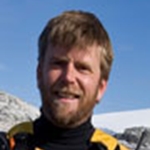
Dan Olsen
Dan lives in Seward, Alaska, and has worked as a guide and naturalist his whole life. Dan taught sailing, navigation, mountaineering, and kayaking at Outward Bound and aboard tall sailing ships, before shifting to expedition ships.He has been a licensed captain since 1993 and has run roughly a thousand Alaska boat tours.Dan has driven boats and guided tours in Alaska, Antarctica, Greenland, Iceland, Svalbard, Chile, Panama, Costa Rica, Europe, and Hawaii. Dan began recording Killer Whales (Orca) in 2004 and was hooked when he learned that families could be identified by their calls. He obtained a Fisheries Biology Masters degree from the University of Alaska Fairbanks, and now is a partner in a non-profit dedicated to monitoring the health of Alaska killer whale populations. Although his specialty is acoustics, he also studies diet and behavior, and is always excited to find whale poo! Dan recently presented for the BBC production, ‘Alaska Wild Live.’ In his spare time, Dan can be found mountain biking, skiing, sailing, canyoneering, fire juggling, slacklining, playing flamenco guitar, or performing improv in Seward.
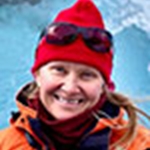
Eva Westerholm
Eva is an animal loving outdoor enthusiast who has guided in the polar regions and many of the countries in between for over 15 years. She grew up on the west coast of Sweden and travelled extensively with her family throughout Europe. Eva credits this early exposure to new cultures as an inspiration to keep exploring and has not slowed down since. Looking for an adventure of her own, she took a job as mess girl on a small vessel in the Arctic Archipelago of Svalbard under the midnight sun. Eva fell in love with the sea and has not stopped sailing since and now has worked nearly every role possible on expedition ships. Not only is Eva an avid birder and a keen naturalist, but she is also very interested in human history and the stories people and places tell. Wanting to learn more she studied at the University of Gothenburg and University of Sydney Australia where she has earned a degree in Social Anthropology. Eva loves sharing her knowledge and experiences, but she values what she learns from her fellow travelers, guests, and colleagues, even more. Currently Eva lives in the beautiful San Juan mountains of Colorado where she enjoys skiing, hiking, and biking. Her work and travelling lifestyle do not allow for a pet at home, so the closest thing to it is a sourdough starter that she has managed to keep alive for over 8 years.
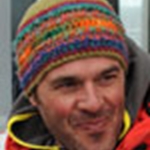
Santiago Imberti
An ornithologist, photographer, fisherman, climber, and writer, Santiago Imberti was born and raised in southern Patagonia, Argentina. He obtained a degree in tourism and later in ornithology, which allowed him to combine his love for nature and the outdoors with his work as a birdwatcher, naturalist, fly fishing, and mountain guide. He has been guiding trips in Patagonia, the Antarctic, and Arctic for some 25 years. However, his main passion is conservation and research therefore off the ships Santiago does field work on birds, mostly in southern Patagonia and is the President of Asociación Ambiente Sur; an NGO that seeks to protect the environment and educate the new generations on a sustainable way of life in southern Patagonia. From 2009 to 2014 he has coordinated the project to save the now critically endangered Hooded Grebe, which is an endemic bird in Patagonia; and the creation of Patagonia National Park, a massive protected area that aims to save the grebe and some of the least know habitats in South America. His many articles and stories have been published in scientific journals, popular travel magazines, books, and since his singing abilities are rather poor, he has produced a couple CDs of the beautiful bird sounds of South America, Patagonia, and Antarctica. He lives in Punta Arenas, southern Patagonia, Chile, with his wife and son.
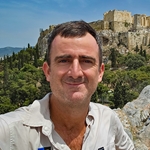
David Brotherson
Growing up near Sydney, Australia, David’s fascination for world history and archaeology was born in the civilization's, history and mythology of the ancient Mediterranean. These interests were nurtured at the University of Sydney as an archaeology major. As his undergraduate studies neared completion, David started travelling the world, which would culminate in a life-changing trip to Southeast Asia. There, in Cambodia, he stood amongst the enigmatic temples of Angkor Wat, and a new life path began to unfurl. The opportunity then arose to work with the university’s Greater Angkor Project, an international, multi-disciplinary research program into the city’s development, daily life and decline. David’s research investigates Angkorian urbanism and decline, using remote sensing, field survey and GIS to analyse its urban history, demise and transformation. He received his PhD in Archaeology from the University of Sydney in 2020. David is a long-term resident of Siem Reap, Cambodia, where he has lectured and led tour groups for over a decade. He regularly travels with National Geographic-Lindblad Expeditions throughout Asia and Europe. His archaeological research in Cambodia is ongoing, as is his passion for world history, educational tourism, the great outdoors, playing guitar and tennis.
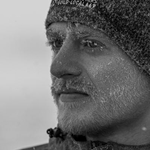
Martin Gregus
Born and raised in Bratislava, Slovakia, Martin Gregus is an internationally awarded wildlife photographer and cinematographer. Martin’s passion for travel and photography started when he was just eight years old, having grown up in a household full of artists. He learned everything from his father—also a photographer—before venturing out to document the local wildlife for himself. Martin first traveled around the world through the hundreds of National Geographic magazines found in his home. Now after almost 19 years, he has journeyed to all seven continents, visiting dozens of countries and some of the planet's most unique ecosystems. His images have received numerous awards, including two wins and two nominations at the Wildlife Photographer of the Year competition in London, UK.
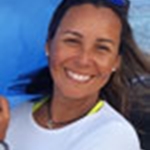
Gaby Bohorquez
Gaby was born and raised in Guayaquil, Ecuador. Her first job in the Galapagos was on board a 90-passenger cruise ship as the cruise director’s assistant, and she fell under the spell of the Enchanted Isles. She returned to Guayaquil to study at the Espiritu Santo Technological University to obtain a degree in Tourism Management. Her fascination for the islands was still strong so, after finishing her studies, Gaby took the opportunity to join the Naturalist Guide’s course, jointly organized by the Galapagos National Park Service and the Charles Darwin Research Station. That was back in 1992, and she has been a naturalist since, keeping her deep love and passion for the islands during all these years. In recent years Gaby was closely involved in the logistics and organization of a two-year conservation program, which brought international teams of volunteers to help in the eradication of aggressive introduced plants –a serious threat to local ecosystems- in the highlands of Santa Cruz Island. The program was coordinated with the Charles Darwin Research Station under the seal of approval of the Galapagos National Park Service. Gaby is a certified National Geographic Field Educator, and she combines her work as a naturalist with motherhood, teaching her children Emily and Danny to know and care about their very unique birthplace. Gaby and her family moved to the United Kingdom a few years ago, and with the kids now reaching university education, she commutes back to her beloved islands several times a year. Being based in the UK makes it easy for Gaby to practice the languages she is fluent in: English, Spanish, French and German. In her time off, Gaby is a self-taught artist, and she is always seeking to learn new arts and crafts techniques, her favorites currently being paper crafts and watercolor media.
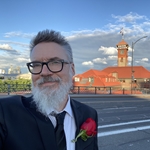
Douglas Kenck-Crispin
Doug Crispin is a historian who honed his craft at Portland State University (Hist. BA, MA) in Portland, Oregon. A lifelong resident of the Pacific Northwest, he has been captivated by the exploits of exploration since he was a boy, and he has continued his professional career with that same infatuation. He is a filmmaker, journalist, and historical consultant who loves sharing the stories he discovers. Doug relishes researching documents at regional archives and burrowing through the back of musty used bookstores, but nothing compares to voyaging the same historic terrain, and seeing the sights as our predecessors saw them, from the perspective of the water line and beyond. Whether in Lewiston, Idaho, or Santiago, Chile, Doug likes to explore local breweries, wineries, and restaurants noted for their regional cuisines, so be sure to ask him for a recommendation! A seasoned traveler, Doug has extensively explored Southeast Asia, South America, and most recently, Belgium. When not investigating historic sites up and down the Columbia and Snake, Inland Passage, Antarctic, and all points beyond, you'll find him at his cabin on Puget Sound, shucking oysters, reading history books, and trying to figure out where D.B. Cooper stashed all that dough.
Showing 12 of 233
